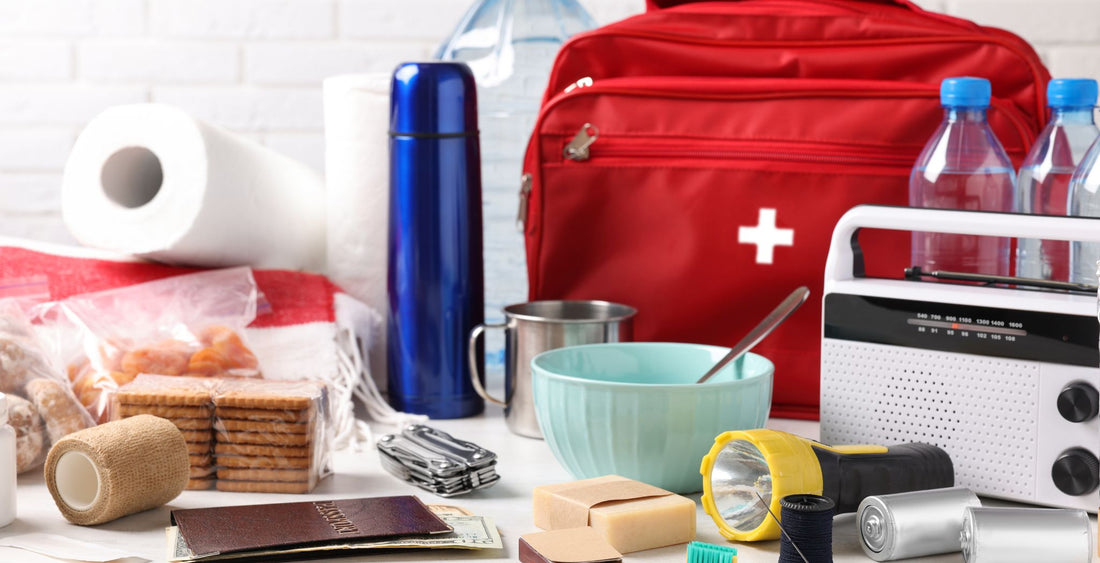
Dressing Bandages for First Aid: Must-Have Supplies for Your First Aid Kit
Share
When it comes to first aid, preparation is key. Whether you're at home, in the workplace, or on an outdoor adventure in beautiful New Zealand, having a well-stocked first aid kit is essential. Among the crucial supplies you should have in your kit are dressing bandages. These versatile items are designed to help you provide immediate care for wounds and injuries.
The Importance of Dressing Bandages

Dressing bandages, also known as wound dressings, play a crucial role in first aid. They serve several essential functions, including:
1. Wound Protection
Dressing bandages provide a protective barrier over wounds, preventing dirt, germs, and contaminants from entering. This protection is vital in reducing the risk of infection and promoting faster healing.
2. Absorption of bodily fluids
Wounds can produce various fluids, such as blood and pus Dressing bandages are designed to absorb these fluids, keeping the wound clean and dry. This helps create an optimal environment for healing.
3. Comfort and Support
Bandages offer support to injured areas, helping to reduce pain and discomfort. They also keep the wound secure, preventing further injury.
Now that we understand the importance of dressing bandages, let's dive into the different types available and explore which ones are best suited for specific situations.
Dressing bandage types
In this brief guide, we'll explore some of the various types of dressing bandages, including
a. head dressing bandages
b. wound dressing bandages
c. finger dressing bandages
d. adhesive dressing bandages
e. sterile dressing bandages
f. ear dressing bandages
Head Dressing Bandage: Protecting the Most Important Organ

Head injuries can result in brain injuries but it may not be immediately evident that a brain injury has occurred. Most first aiders will not be able to determine if there has been a skull fracture, concussion or a brain compression. It can also take hours for symptoms to start to appear. Therefore please always consider head injuries to be serious and seek immediate medical care from a health professional. If you do need to administer first aid to a head injury it is helpful to understand how to apply a head dressing bandage.
Head injuries will often involve a lot of bleeding. This is because there are a lot of blood vessels close to the skin surface in this area of the body. If there is bleeding, direct pressure to the wound site will be needed and a head dressing bandage can be very useful for this purpose.
What Is a Head Dressing Bandage?
A head dressing bandage, also known as a head wound dressing, protects and covers wounds on the head. They can often be made out of triangular bandages, bandanas, cohesive bandages or crepe bandages combined with gauze or other wound dressings such as non-adherent dressings and combine dressings.
Wound Dressing Bandage: Addressing Cuts and Abrasions

What Is a Wound Dressing Bandage?
Wound dressing bandages are essential for covering and protecting various types of wounds, including cuts, abrasions, and surgical incisions. They are designed to create a barrier against infection while promoting a conducive environment for healing.
Finger Dressing Bandage: Precision for Small Wounds

What Is a Finger Dressing Bandage?
Finger dressing bandages are designed with a unique shape to fit securely around fingers. They are ideal for covering small cuts and wounds on the digits, ensuring proper protection and hygiene.
Adhesive Dressing Bandage: Staying Secure and Comfortable

What Is an Adhesive Dressing Bandage?
Adhesive dressing bandages are perhaps the most commonly used type of dressing bandage. They feature an adhesive backing that sticks to the skin, ensuring that the bandage stays in place during movement. They include plasters, island dressings and dressing strips.
Sterile Dressing Bandage: Preventing Infection

What Is a Sterile Dressing Bandage?
Sterile dressing bandages are essential for maintaining a clean and bacteria-free environment around a wound. They are individually packaged to prevent contamination and are commonly used in medical settings and include most of the dressing bandages already discussed.
Ear Dressing Bandage: Caring for Delicate Areas

What Is an Ear Dressing Bandage?
Ear dressing bandages are specialised bandages designed to cover and protect injuries around the ear area. These bandages are crucial for maintaining hygiene and preventing infection in this sensitive region.
Trauma Dressing Bandage: Direct Pressure to Prevent Major Blood Loss

What Is a Trauma Dressing Bandage?
Trauma Dressing Bandages are primarily designed to apply direct pressure to a wound to prevent blood loss but can also be used to secure splints, act as a sling, or be applied in any other situation that would benefit from an elastic wrap.
Dressing Bandage Application Tips
Now that you've chosen the right dressing or bandage for your specific needs, here are some essential tips for proper application:
1. Cleanse the Wound: If there is an open wound ensure the wound is clean and free from debris , before applying the dressing or bandage.Use antiseptic wipes, an antiseptic solution or an antiseptic ointment if available.
2. Select the Right Size: Choose a dressing bandage that adequately covers the wound without being too tight or too loose.
3. Securely Wrap: Apply the bandage securely but not so tight that it restricts circulation. Be mindful of the sensation in the affected area.
4. Regularly Check and Change: Monitor the wound and change the dressing or bandage as needed to maintain cleanliness and promote healing.
5. Seek Medical Attention: If the wound is deep, infected, or shows signs of worsening, consult a healthcare professional promptly.
Concluding comments: Dressing bandages should form part of any well stocked first aid kit as they can usually be applied to a wide variety of injuries as a first aid measure until proper medical care can be provided.
Disclaimer- The information provided in this blog post is intended as general information for entertainment purposes only. We are not healthcare providers and we do not hold any healthcare qualification. The content contained on this site is in no way intended as medical advice or as a substitute for medical treatment and we are not making any recommendations for your personal situation.
